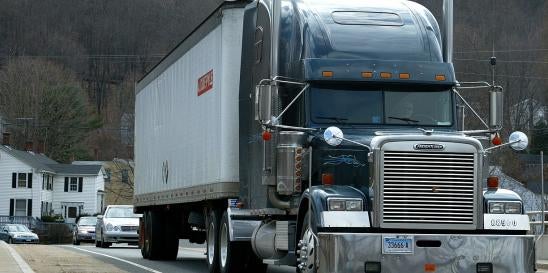Recent statements from senior Biden Administration officials and members of Congress make clear that US manufacturers and importers now face intense scrutiny of their global supply chains.
These tensions leave truck manufacturers with having to factor geopolitical realities into their global procurement strategies. In this alert, we take stock of key trade regulations emanating from Washington and their tariff implications on the trucking manufacturing sector, particularly those incorporating foreign parts and assemblies. Our objective is to put these latest trade developments into perspective and provide insight into how they can trigger costly tariffs if misunderstood or misapplied.
How We Got Here
In US trade parlance, trade regulations and tariff treatment start and end with the legal determination of the imported product’s “origin” — a concept with multiple meanings in relation to the import’s country of production. That ever-evolving determination is made by US Customs and Border Protection (CBP) and leads to ranges of positive and negative consequences (in many cases, saving or spending on double-digit tariffs). In today’s political environment, the concept of origin is receiving new legal and regulatory scrutiny by a cast of US agencies.
Defining “origin” is not intuitive, as it is not necessarily the country of the foreign port that shipped the goods to the US port. Furthermore, it is rarely the country where minimal assembly is performed.
Where to Start and Why ‘Origin’ Matters
CBP’s legal definition is a good place to start. CBP determines the “country of origin” by typically requiring a “substantial transformation” of the foreign materials used in a country for the production of a good. However, this definition differs from the free trade agreement (FTA) concept of “rules of origin,” where the US negotiates specific origin rules for determining whether an import “originates” based on the US production or the production in the free-trade partner’s foreign country.
While other US government agencies apply similar origin concepts, the subtle differences can lead to different origin determinations for the same product. Not only does CBP determine the country of origin, but it also pushes the origin information along to the relevant US agencies.
The Role of “Origin” in Four Major US Tariff Programs
1. The USMCA
Signed in 2020, the pact is coming up for review in 2026. Although still two years away, we are alerting readers who are benefiting from its preferential tariff benefits now, given that the three capitols will be launching preliminary talks with industry leaders in 2025. In fact, the process may have already begun as we previously pointed out in our alert.
United States-Mexico-Canada Agreement (USMCA) qualification can mitigate the longstanding 25% US tariff on finished imported light and heavy vehicles. For these reasons, any changes to the USMCA’s regional value content (RVC) rules should be closely watched. The RVC thresholds for USMCA qualification of light trucks are higher than heavy trucks, and these complex RVC rules further vary between these two categories of trucks.
Imports of heavy trucks that qualify under the USMCA are now on a longer phase-in timeline than light trucks, increasing from 60% to 64% RVC on July 1, 2024, and then topping off at 70% on July 1, 2027. Meanwhile, light trucks are already subject to a 75% RVC calculation unless exempt through the Alternative Staging Regime that expires on July 1, 2025. Adding to the varying thresholds and timelines, these truck categories have very different rules for the qualification of their parts, many of which are the same part assembled in a different vehicle.[1]
This complexity in USMCA qualification is not lost on the US government.[2] Along with increased scrutiny, these RVC increases should serve as a signal for truck manufacturers to revisit their USMCA qualification calculations, which often depend on complicated cost accounting analysis to reach the qualifying origin content levels.
2. US 301 China Tariffs
As we noted in a previous alert, the key factors for determining whether Section 301 China tariffs apply consist of the imported product’s tariff classification and its country of origin. When the product’s origin is China under the “substantial transformation” test, the list of imported products subject to Section 301 tariffs include a wide range of vehicle inputs. These include battery cells, battery modules, battery packs, electrical control boards and inputs for the battery management system (BMS), charging stations and components (e.g., converters and transformers), most vehicle parts (e.g., electric motors, transmission, body, axle, suspension, steering assemblies), critical minerals (e.g., lithium, cadmium, cobalt, lead, mercury, zirconium, magnesium), pitch coke, and artificial graphite.
This means that the truck manufacturing supply chain entering into the United States may need to pay additional Section 301 China tariffs of up to 25% on imports produced in China. This is in addition to regular Most Favored Nation duties and applies even if the Chinese-origin good is exported from a third country to the United States (i.e., transshipped). This also applies to inputs produced in China that are further processed in Mexico or another third country but without being substantially transformed before importation into the United States.
3. US 232 Steel and Aluminum Tariffs
The decision by the Trump Administration in 2018 to impose additional duties — US 232 tariffs — on a wide variety of aluminum and steel products adds to that tangle of trade rules and increases import costs with tariffs of 25% on steel products and 10% on aluminum products from almost all countries. These tariffs have had a significant impact on the vehicle industry, including trucks, and their parts and components. Our team has been closely following developments on this front.
Similar to the Section 301 China tariffs, the Section 232 steel and aluminum tariffs can be avoided if the last demonstrated substantial transformation of the steel and aluminum product occurs in a country exempt from these tariffs prior to importation into the United States. However, for steel and aluminum products subject to the Section 232 tariffs that are merely transshipped through a third country or minimally processed in such a country, the tariffs will apply.
4. US Forced Labor Legislation
The use of forced labor in the manufacturing of products destined to the United States is a growing concern in Washington. CBP has been tasked with clear instructions to increase enforcement activity on this front. Recent legislation included a no de minimis provision.
This means that US importers, as well as US producers, of trucks and their parts must know their supply chain down to the mining of the critical materials used to make parts that are incorporated into a truck. Otherwise, the imported good, whether it is a part or subassembly, or the finished good itself, risks detention by CBP.
How We Can Help
Our work with business leaders often begins by assisting in asking the right questions internally to determine areas of potential risk as well as competitive opportunity. Executives know their product and their suppliers. We know the regulations. Our team, comprising of former senior attorneys at the US Department of the Treasury and CBP, provides a deep bench for companies with operationally complex supply chains, foreign manufacturing, and multiple production locations.
[1] As noted in our previous alert, there are many cases where electric vehicle and hybrid pickup trucks are categorized as heavy trucks, while the same pickup truck’s Internal Combustion Engine equivalent is considered a light truck (i.e., overlapping parts in these pickup trucks would be subject to different rules).
[2] These various issues have been flagged in public comments to the US Treasury’s notice seeking public input on the USMCA Rules of Origin.





 i
i


